Swiss Garden Design Ideas: Transform Your Outdoor Space
Gardening in Switzerland offers you a unique blend of natural beauty and meticulous design. The harmonious mix of stunning landscapes with thoughtful garden layouts can transform any space into a serene retreat. What makes Swiss garden design truly special is the balance between functionality and aesthetics.
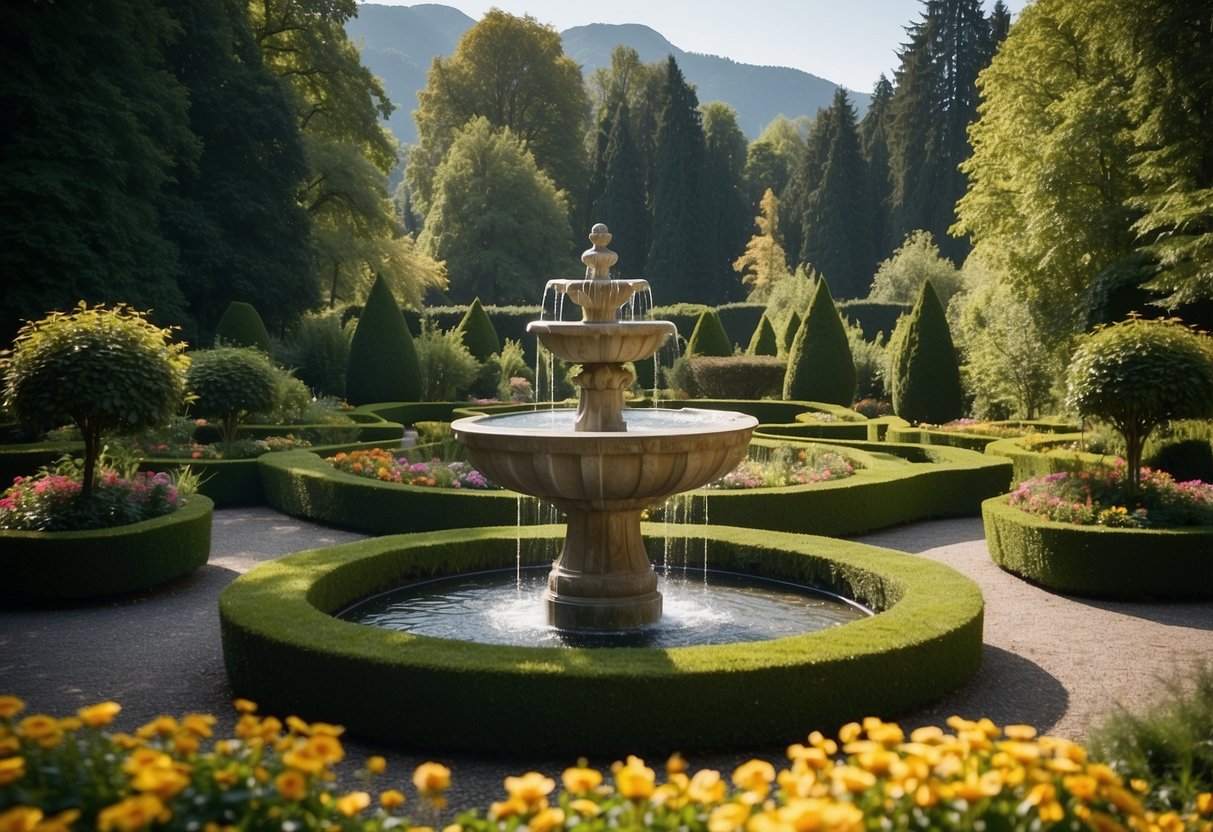
As you explore Swiss garden design ideas, you’ll find a variety of styles ranging from traditional to contemporary. Each garden not only reflects personal taste but also connects with the surrounding environment. Whether you’re inspired by the Alps, quaint cottages, or urban parks, there’s a Swiss garden design that can fit your vision.
1) Cottage Stone Pathways
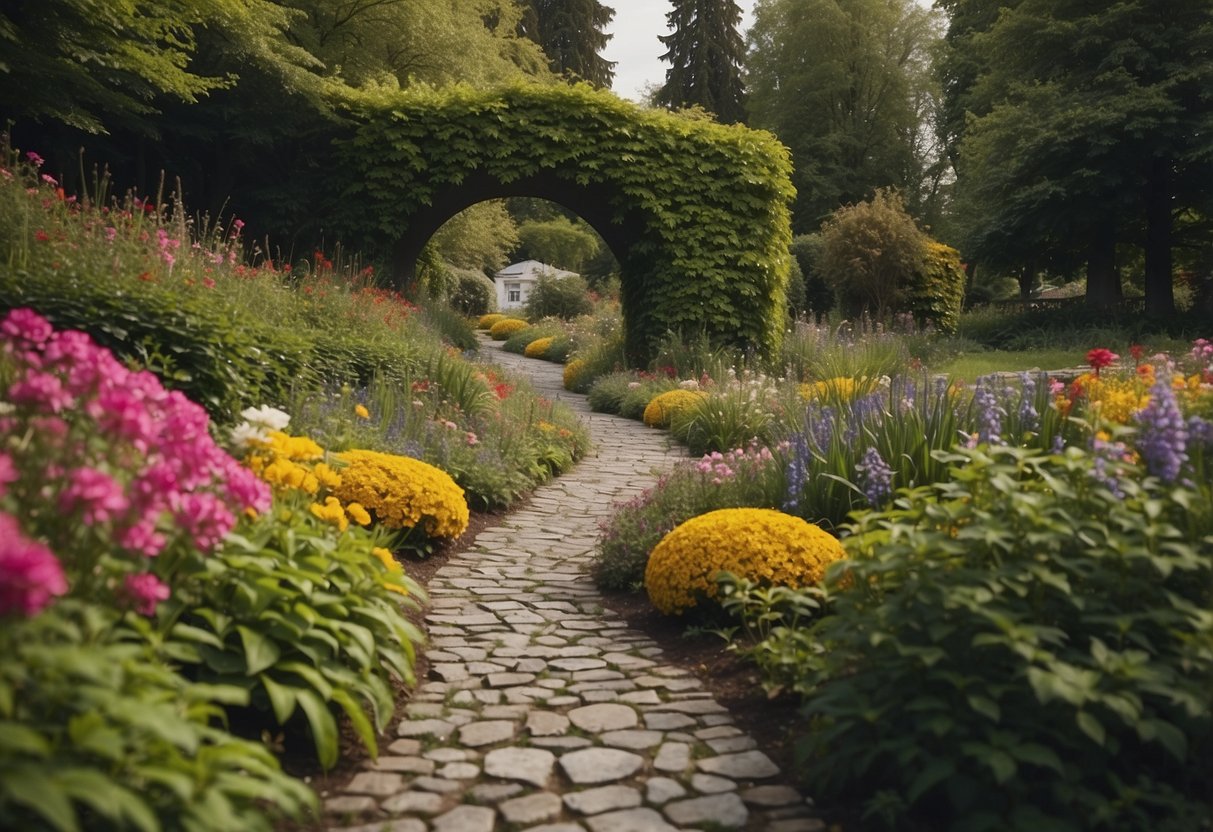
Cottage stone pathways can add charm and function to your garden. Using natural or reclaimed materials gives your path a soft, vintage feel. Stones like flagstone or cobblestone work well. Consider filling gaps with small pebbles for a natural look.
Paths meandering through your garden create a sense of journey. They invite you to explore winding routes. Planting lush greenery like ferns and palms along the edges enhances the experience, making you feel immersed in nature. Imagine walking along a stone pathway, surrounded by blooming flowers and vibrant foliage.
2) Alpine Rock Gardens
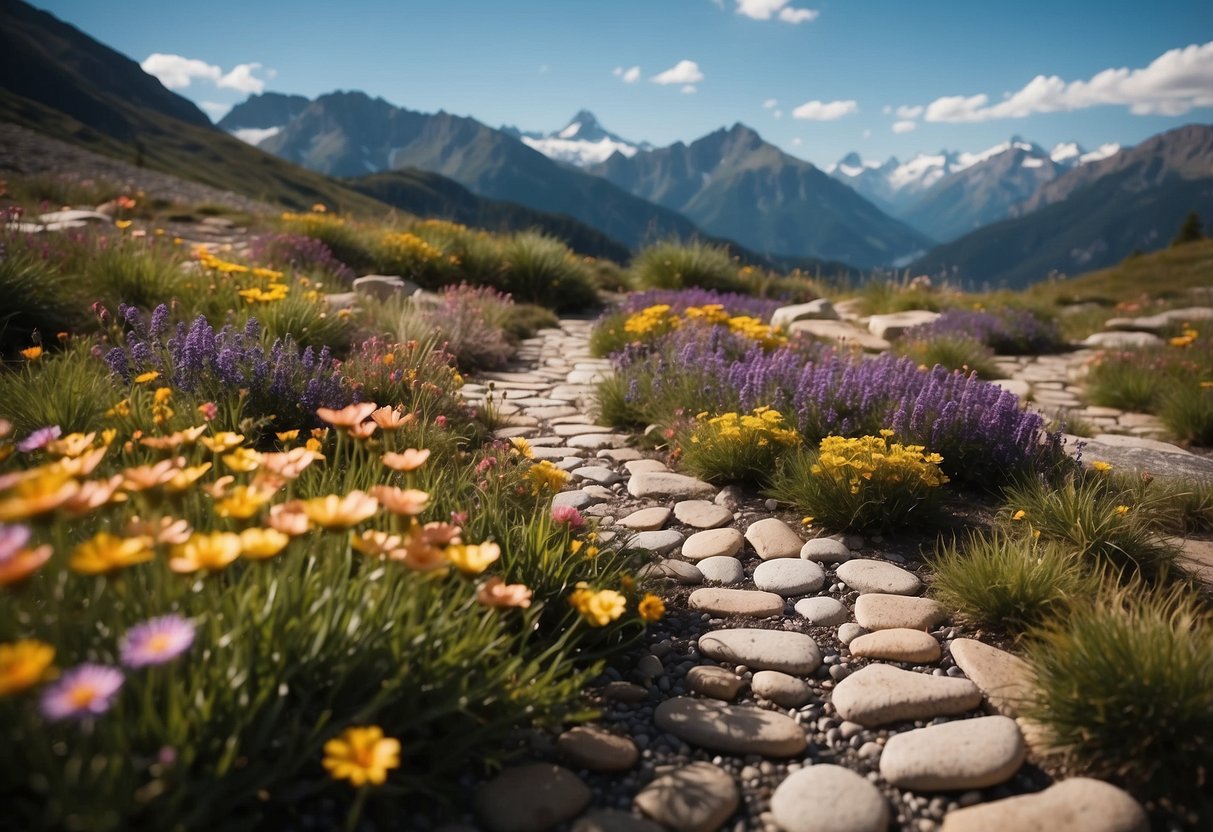
Alpine rock gardens bring the beauty of mountain scenery to your backyard. These gardens feature rough rocks paired with vibrant groundcovers and other alpine plants. By adding plants like primula and creeping thyme, you can create a stunning landscape.
Good drainage is key for the health of your plants. Considering adding bulbs like narcissus and wild tulips to add color and contrast.
Using perennials and small shrubs will give your garden vertical height and make it even more eye-catching.
3) Rustic Wooden Benches
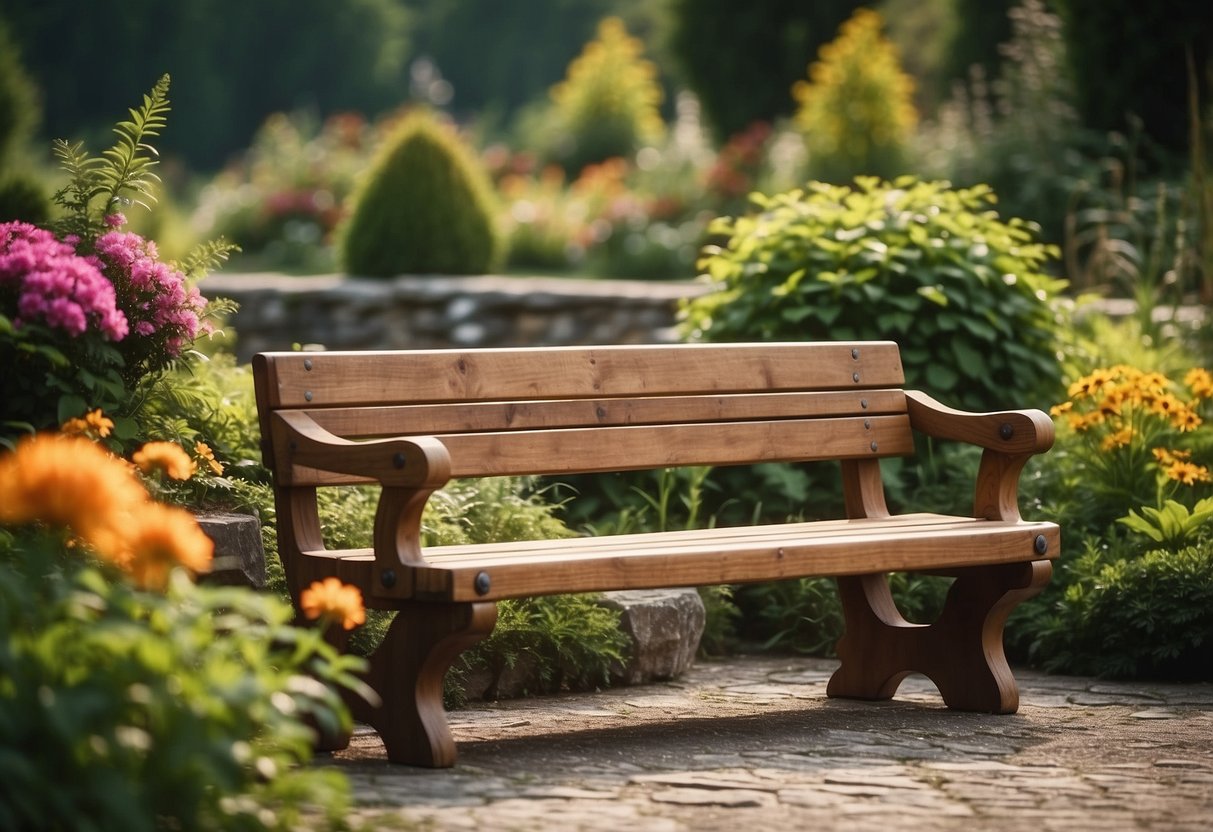
Rustic wooden benches add charm to any Swiss garden. Made from natural materials like oak or cedar, these benches blend well with greenery and flowers.
You can place them along garden paths or under trees for a cozy spot to relax. You can find various styles, from simple wooden planks to more detailed designs with carved patterns.
For more ideas, check out these creative garden bench ideas. You might also like this DIY rustic bench if you’re handy with tools.
4) Flowering Meadow Lawns

Flowering meadow lawns can transform your garden into a colorful oasis. Start by placing clear plastic sheeting over the area to solarize weeds. This helps to prepare the soil.
Next, mix cool- and warm-season grasses with wildflowers. This will ensure a continuous bloom throughout the growing season.
Plant key cultivars in dense clumps or airy drifts. This creates depth and dimension. Remember to space plants about a foot apart to prevent weeds from taking over too quickly. You can find more tips on creating meadow gardens at Garden Design.
5) Serene Water Features
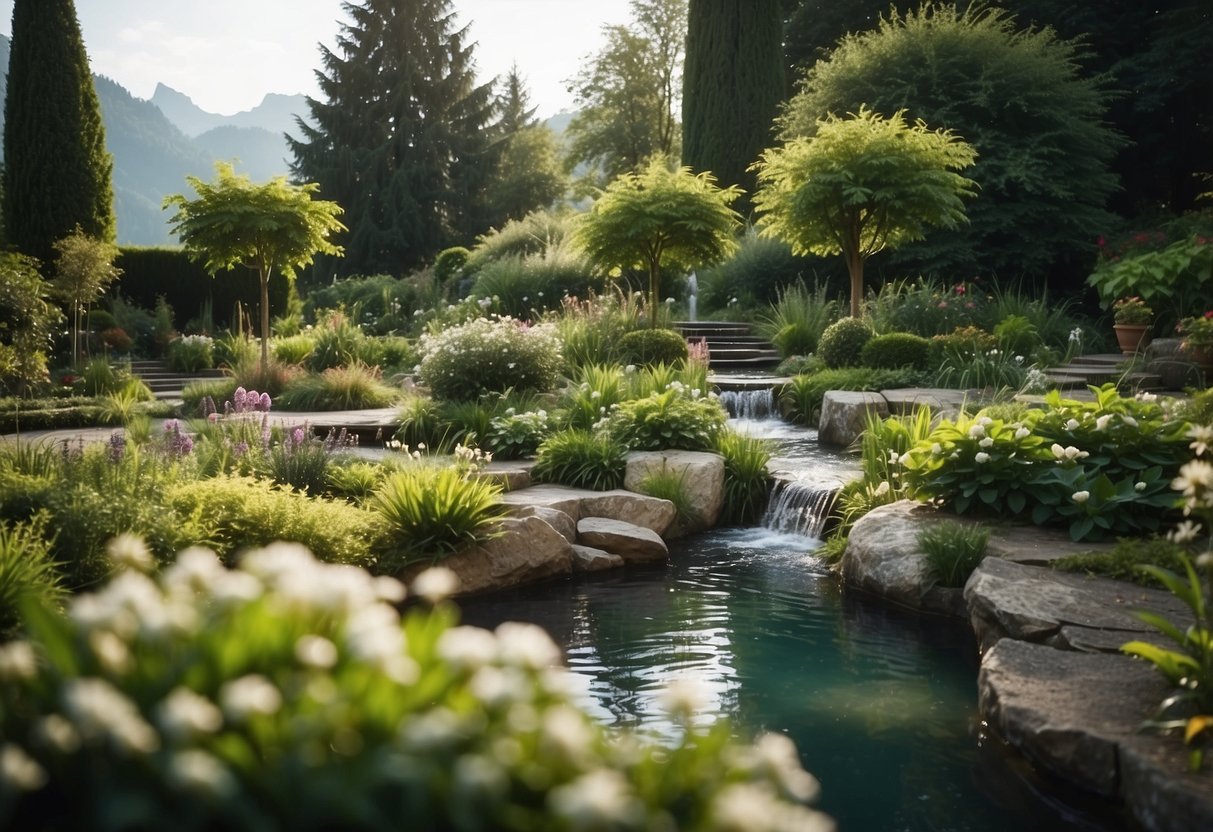
Water features can bring peace and beauty to your Swiss garden. A small pond with fish or lilies can create a tranquil spot. Adding a fountain with the gentle sound of flowing water enhances relaxation.
Consider incorporating Mediterranean-style fountains for a touch of elegance. Waterfalls, even small ones, can add a soothing vibe.
Surround your water feature with local plants to blend it into the landscape. Simple, serene water features can turn your garden into a peaceful retreat.
6) Colorful Window Boxes
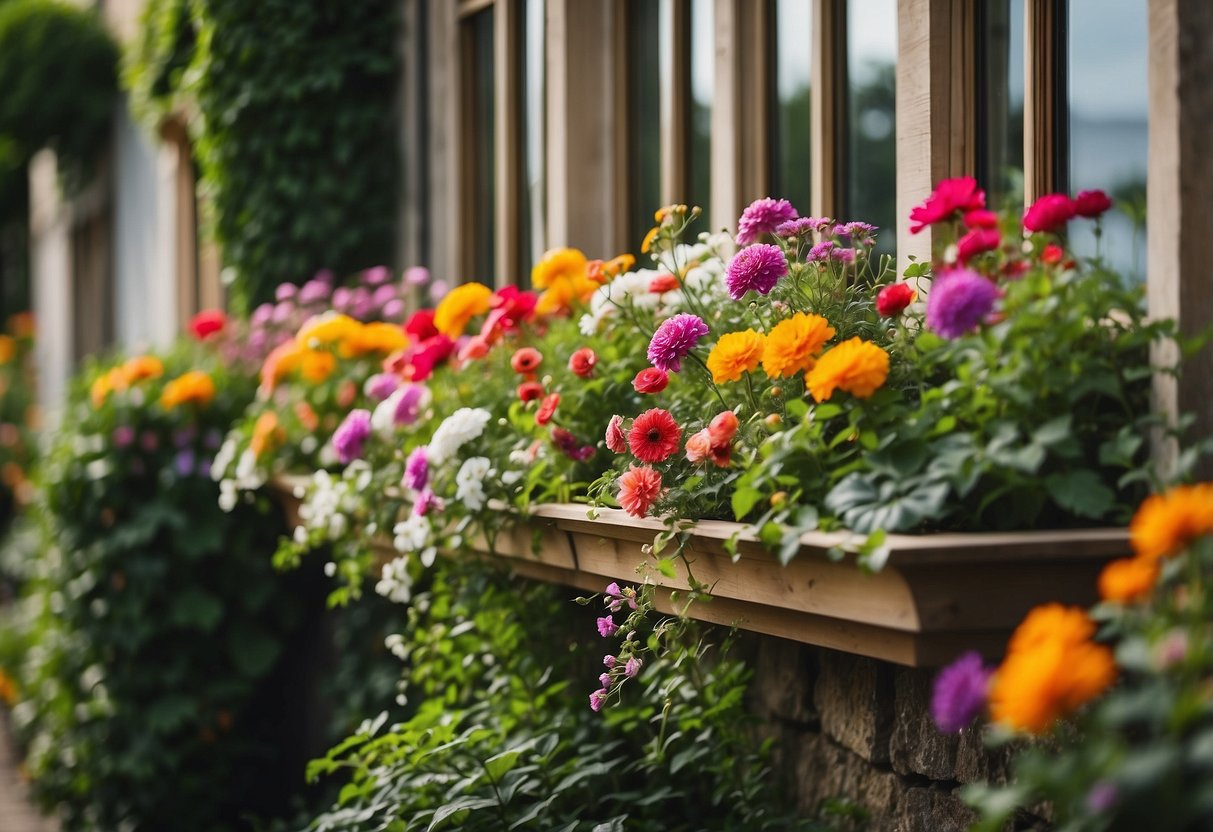
Adding colorful window boxes can really brighten up your Swiss garden. You can mix and match a variety of flowers and plants to create a vibrant display.
Plants like bacopa and calibrachoa are easy to care for and look beautiful all season long. They add texture and color to your window boxes.
Consider adding some trailing plants or even vines. These can help draw the eye up and create a lovely visual effect. You can get more ideas for sunny spots from BHG’s window box ideas.
7) Herb Spiral Gardens

Herb spiral gardens are both practical and beautiful. They are built in a spiral shape, rising higher in the center. This design creates varied growing conditions within a small space.
You can use materials like stones, bricks, or even recycled items. Choose a sunny spot with good drainage to start your herb spiral garden.
The spiral garden’s shape provides different microclimates. Plants that need more sun and drainage go on top. Shade-loving plants fit better at the bottom. This way, you can grow a variety of herbs in one compact area. For more detailed guidance, check out this spiral herb garden design.
8) Climbing Vine Trellises
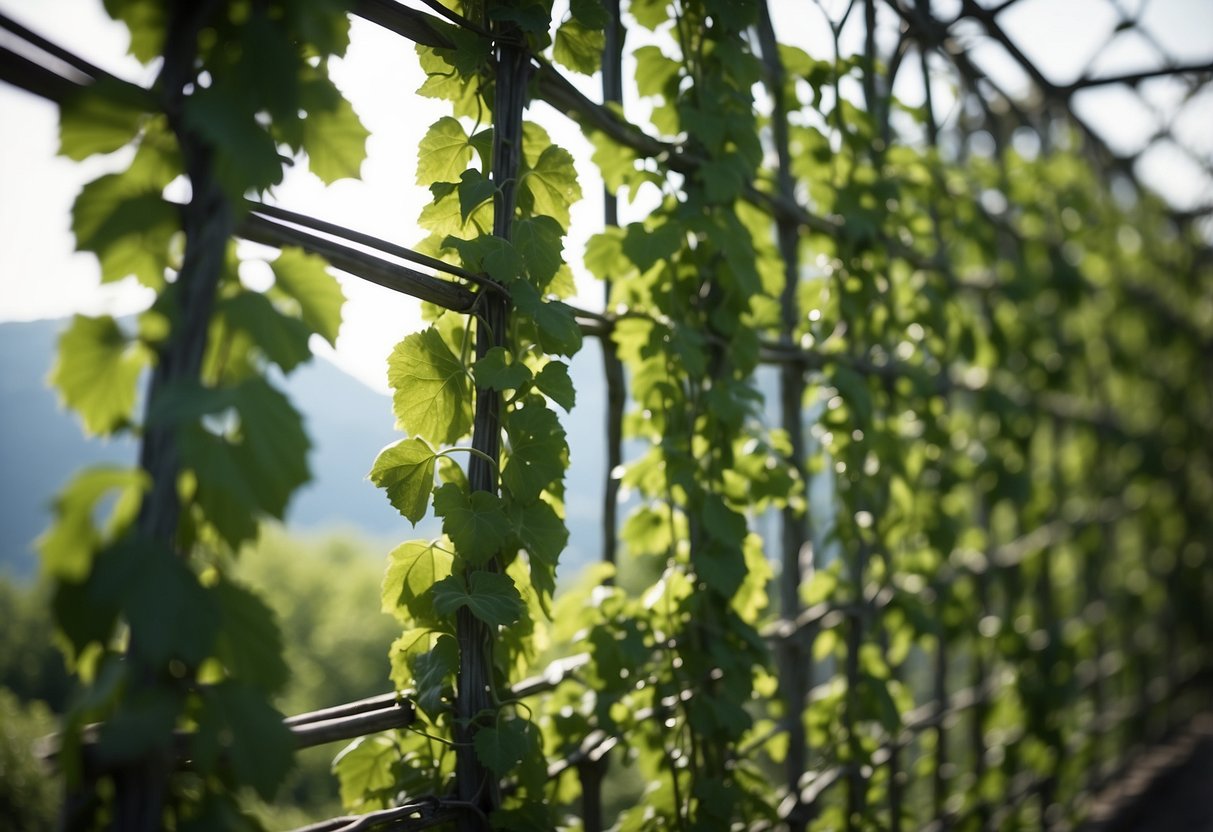
Adding climbing vine trellises to your Swiss garden can instantly elevate its charm. They provide a structure for your plants to grow and create a lush, green backdrop.
Consider using materials like bamboo or metal grids. These are both sturdy and stylish. Plus, they complement the natural beauty of climbing plants.
For a touch of whimsy, think about a woven willow trellis. It’s both functional and decorative, blending seamlessly with your garden’s landscape.
Your garden will feel more vibrant with trellises supporting climbing vines. They add height, color, and texture, making your outdoor space even more inviting.
9) Edible Vegetable Plots
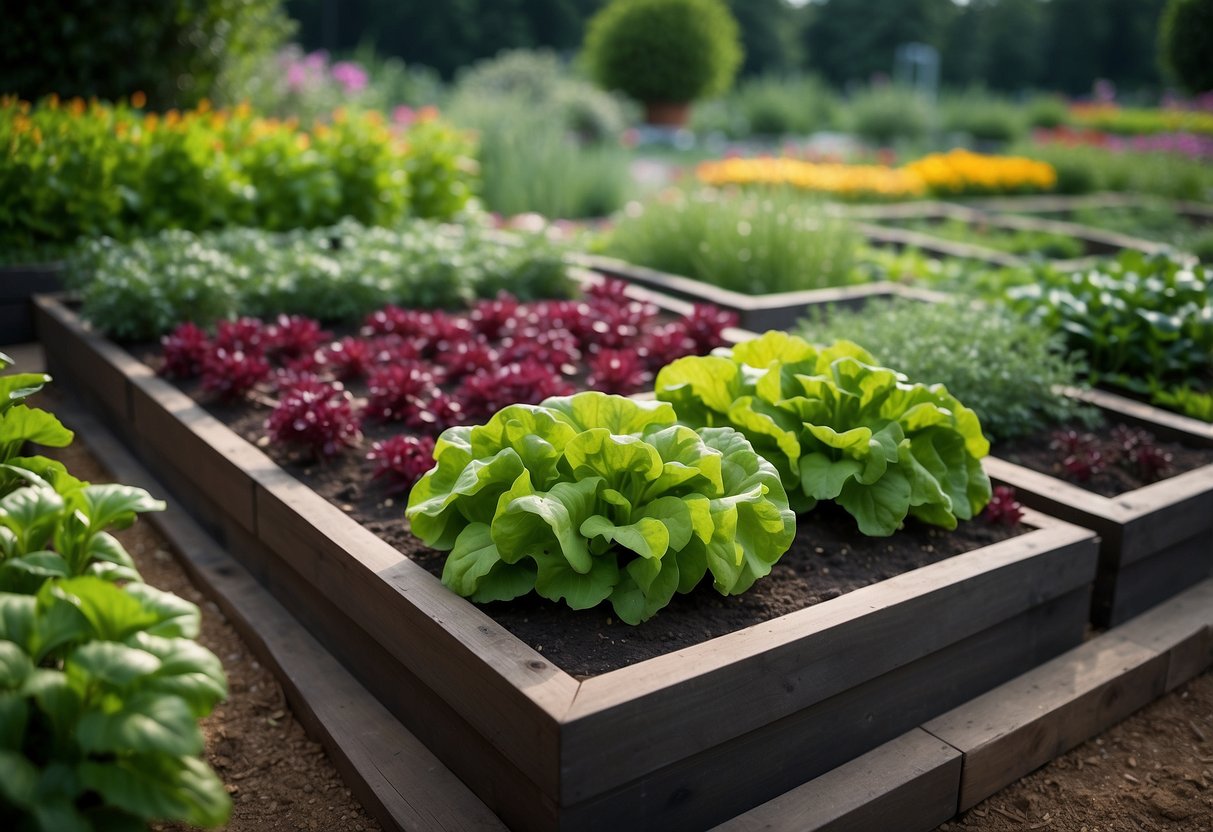
Edible vegetable plots can be both beautiful and practical. Imagine picking fresh veggies right from your garden.
You can mix colorful vegetables like eggplants, red-leaf lettuce, and different tomatoes for a vibrant look. Herbs such as thyme and parsley not only add greenery but also enhance the taste of your meals.
Using a square-foot gardening layout can help maximize space efficiently. This method involves small, densely planted garden beds, allowing you to grow a variety of vegetables in a limited area.
10) Ornamental Grasses

Ornamental grasses can add beauty and texture to your Swiss garden. They come in various sizes and colors, making it easy to find the perfect match for your space.
You can use tall grasses like big bluestem to create privacy screens. These tall options can block unwanted views and add a natural feel.
For a pop of color, try planting Ruby Fountain Grass. Its maroon hue stands out beautifully against green and gray foliage. This variety thrives throughout spring, summer, and fall. Adding them to containers is another creative way to use grasses in your garden. They make striking centerpieces in large pots.
Principles Of Swiss Garden Design
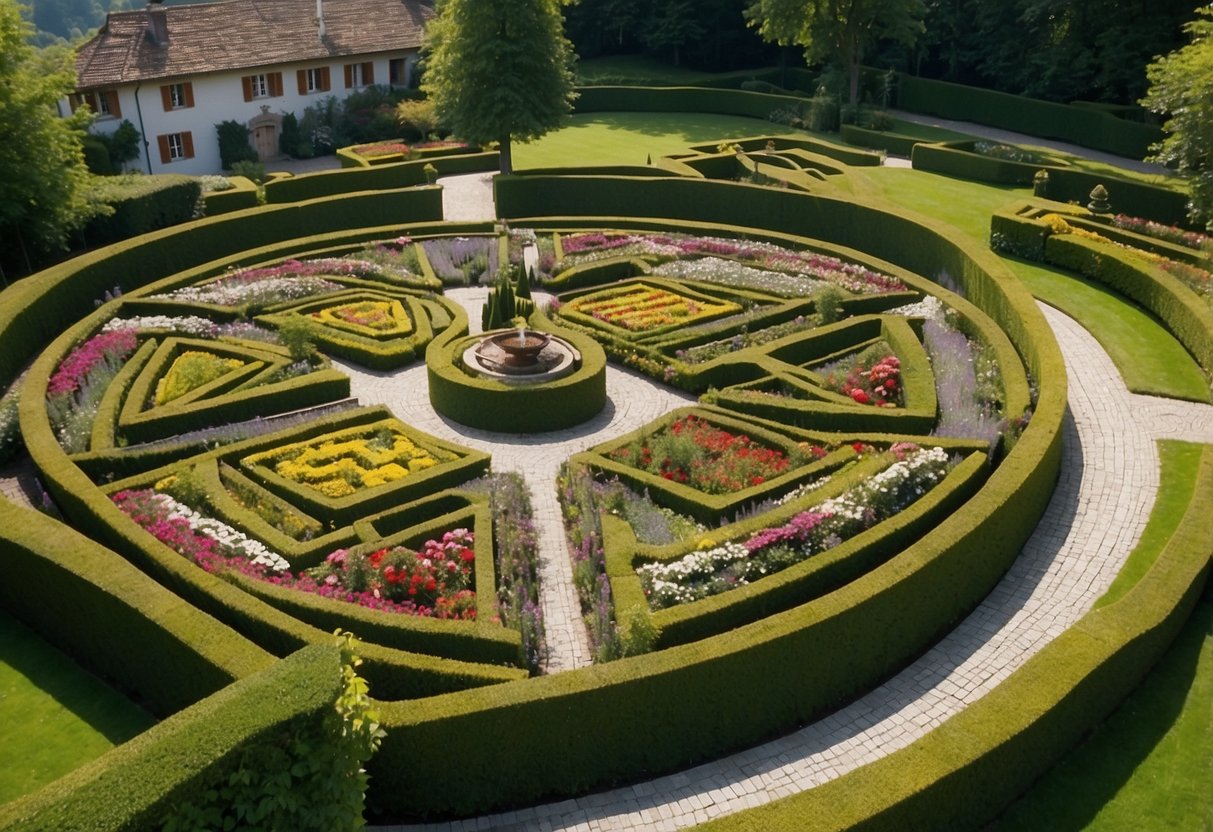
Swiss garden design emphasizes clean lines, native plants, and harmony with the surrounding landscape. Each principle ensures a functional and visually appealing garden.
Emphasis On Simplicity
Swiss garden design is all about keeping it simple. You’ll find clean lines and minimalistic elements that create a sense of order. Paths and borders are straight and uncluttered. This not only makes your garden look tidy but also makes it easier to maintain.
Focus on geometric shapes and avoid overly ornate decorations. The use of neutral colors helps keep the look cohesive. By sticking to these principles, you can create a garden that feels calm and ordered.
Use Of Native Plants
Choosing native plants is essential in Swiss garden design. These plants are well-suited to the local climate and soil, making them easier to care for. They also support local wildlife, which can be an added benefit.
You can find lists of native plants suited to your area from local nurseries or gardening groups. Incorporating these plants creates a garden that looks natural and thrives without much effort. Native plants also tend to be more drought-resistant, reducing the need for constant watering.
Integration With Landscape
A key principle is to integrate your garden with the surrounding landscape. Take inspiration from nearby mountains, lakes, or urban settings. This ensures your garden feels like a natural extension of its environment.
Use elements like rocks, water features, and natural wood to tie everything together. Avoid creating abrupt contrasts; instead, aim for a smooth transition between your garden and its surroundings. This makes your space feel larger and more harmonious.
By following these principles, you can create a Swiss garden that is both beautiful and easy to maintain. Your garden will not only serve as a personal retreat but also as a thoughtful extension of the natural beauty around you.
Top Features Of Swiss Gardens
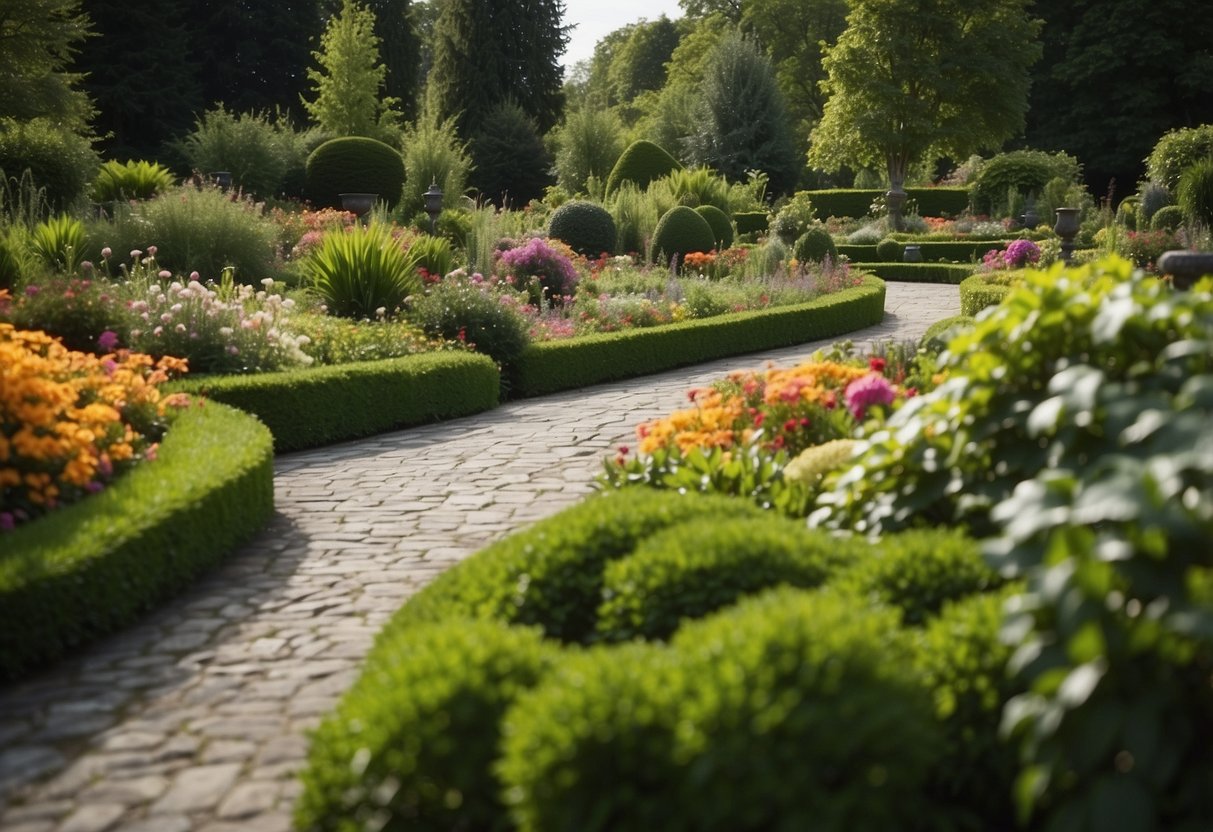
Swiss gardens are known for their harmonious blend of nature and design. They often incorporate natural water elements and alpine rock gardens, creating a peaceful and aesthetically pleasing environment.
Natural Water Elements
Natural water elements are a common feature in Swiss gardens. You may find small ponds, streams, or even waterfalls integrated into the landscape. These water features not only enhance the beauty of the garden but also attract wildlife, such as birds and butterflies.
Consider adding a pond with lily pads and aquatic plants to create a serene focal point. Small, bubbling streams can wind through the garden, providing soothing background sounds. Waterfalls can add a dynamic element, with water cascading over rocks or through a carefully designed structure.
Maintenance is important. Regularly clean the water features to prevent algae growth and ensure the water remains clear. Use native plants around the water elements to create a natural look and to support local wildlife.
Alpine Rock Gardens
Alpine rock gardens are inspired by Switzerland’s mountainous regions. They often feature rocks, gravel, and drought-resistant plants like succulents and alpine flowers. These gardens mimic the rugged beauty of the Alps and require minimal watering and maintenance.
Choose a variety of rock sizes to create texture and depth. Arrange them naturally, as if they were placed by nature. Plant low-growing, hardy plants that can thrive in rocky soil, such as edelweiss, gentians, and saxifrages. These plants are well-suited to the alpine climate and add bursts of color.
Using a mix of fine gravel, coarse pebbles, and larger stones will make your rock garden look more authentic. It’s also helpful to include a few miniature conifers or dwarf shrubs to add vertical interest without overwhelming the space.







